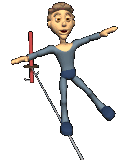
This spur, worn over a riding boot, was made in Mexico in the mid-1800s. Rubbed against the animal's side, spurs are one of the instruments that riders use to direct horses. The spikes on this spur are set on a small wheel called a rowel, making this a rowel spur. Horses and good riding equipment, such as spurs, saddles, stirrups, and leather coverings, played a fundamental role in the European conquest, exploration, and settlement of wide areas of North America. Much of the technique and craftsmanship of riding culture that was found in the American West among both Native Americans and later U.S. settlers was introduced by the Spanish in Mexico within the first century of colonization (1500s). During this period, huge herds of cattle and sheep (both newly introduced species, like horses) flooded the dry grasslands of northern Mexico and were tended by men who would later be called vaqueros—cowboys. The ranching culture that they developed, as well as the ecological destruction that grazing produced, stretched from Texas to California. This economy of raising livestock on the open range was embraced by settlers coming overland from the American East along routes like the Santa Fe, Old Spanish, and Gila trails. To this day, ranching remains a vital economic and cultural force in both the American West and northern Mexico.
The Festival Begins Today
7 hours ago














0 comments:
Post a Comment